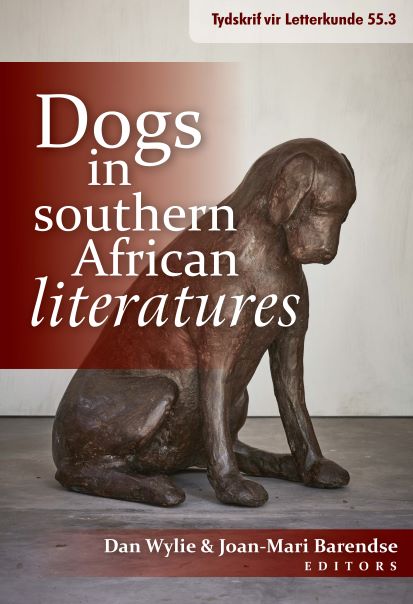Dark ecology and the representation of canids in Deon Meyer’s Fever
DOI:
https://doi.org/10.17159/2309-9070/tvl.v.55i3.5501Keywords:
Dark Ecology, Deon Meyer, dogs in literature, ecocriticism, Fever, object-oriented ontology, speculative fiction, Timothy MortonAbstract
Deon Meyer’s post-apocalyptic novel, Fever, opens with Nico Storm, the narrator, and his father being attacked by dogs. Nico is only thirteen years old, but is forced to shoot the dogs to rescue his father. This incident sets the scene for the rest of the novel. It characterises Nico and his father and their relationship. It also informs the reader about the world in which the novel is set. Fever opens a few months after ninety-five percent of the world’s population died as the result of a mysterious virus—one engineered in an attempt to redress ecological imbalances. In this article, the representation of dogs and other canids in Fever is used as a departure point to bring the worldviews of the various characters into dialogue with Timothy Morton’s Dark Ecology. It is argued that the different worldviews (and the place accorded to canids in each) have political and ecological implications. Most of the worldviews can be understood in terms of what Morton calls the “agrilogistic loop” because they are based on the assumption that humans can and should manipulate the nonhuman. Two characters’ view of canids are, however, closer to what Morton terms “ecognosis”, because they acknowledge humans’ (and canids’) entanglement with the rest of nature. ment with the rest of nature.
Downloads
References
Bryant, Levi R. The Democracy of Objects. Open Humanities, 2011.
Freud, Sigmund. “The ‘Uncanny’,” (1919). Accessed 11 May 2017.
Hilfer, Anthony Channell. The Crime Novel:A deviant genre. University of Texas, 1990.
Krutnik, Frank. In a Lonely Street. Film Noir, genre, masculinity. Routledge, 2006.
Meyer, Deon. Fever. Hodder & Stoughton, 2017.
Mies, Maria. “Self-determination: the end of utopia?” Ecofeminism. Eds. Maria Mies and
Vandana Shiva. Zed Books, 2014. pp. 218–230.
Morton, Timothy. “An Object-Oriented Defence of Poetry.” New Literary History vol. 43, no. 2, 2012, pp. 205–224.
Morton, Timothy. Dark Ecology: For a logic of future coexistence. Columbia U P 2016. Epub E-book.
Morton, Timothy. Ecology without Nature: Rethinking environmental aesthetics. Harvard U P, 2009.
Telotte, J.P. Voices in the Dark. The narrative patterns of Film Noir. University of Illinois, 1989.
Versfeld, Marthinus. Die neukery met die appelboom en ander essays. Protea, 2009.
Downloads
Published
Issue
Section
License
Copyright (c) 2018 Tydskrif vir Letterkunde

This work is licensed under a Creative Commons Attribution-ShareAlike 4.0 International License.


 https://orcid.org/0000-0001-6465-6584
https://orcid.org/0000-0001-6465-6584


.png)